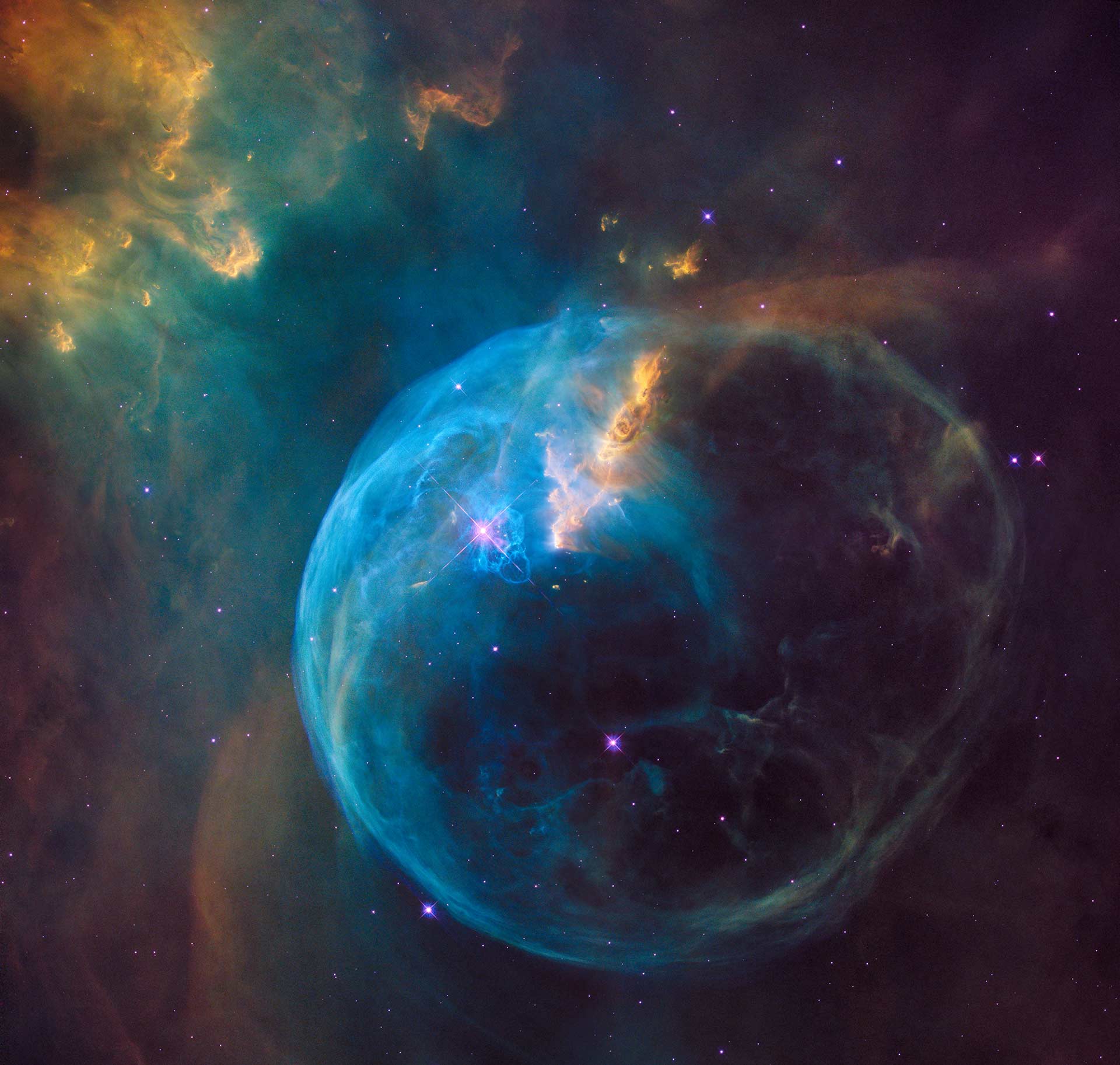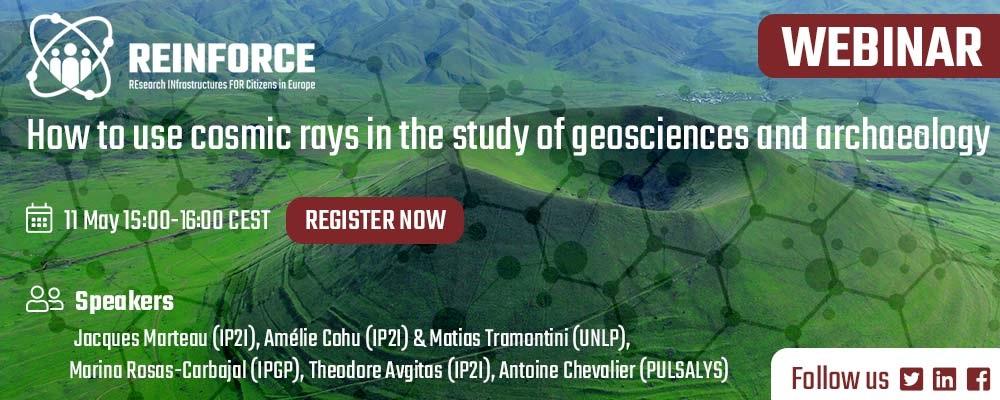How to use cosmic rays in the study of geosciences and archaeology
The technology developed to study fundamental physics can be applied to the development of frameworks that may have a significant impact on society. The Atmospheric Muons have unique potential to probe structures and provide insight in a series of issues, ranging from volcano live monitoring to applications in archaeology or use for non- invasive and non-destructive control processes in the industry.
Muography is an innovative technique using secondary cosmic rays produced in the atmosphere, the most energetic of which have the property to cross ordinary matter over relevant distances (from meters to kilometers). The detection of those particles after any type of target allows therefore the characterization of the distribution and the density of the matter inside the target, as it is done for instance in medical imaging with X-rays. There is a strong societal impact of this technique, which is mostly passive and therefore adapted to any field of investigation: controls, risks assessment, hazards management.
In the framework of REINFORCE, citizens will be provided with open data detected with distributed networks of cosmic ray detectors and will contribute in performing inquiries at the interplay between cosmic ray research and its applications.
The webinar aims to give an overview of the Cosmic Muons Images Large Scale Citizen Science demonstrator and how it will be implemented in order to engage citizens in the scientific research, showcasing the tasks that citizens will be asked to perform and how their input will be fundamental to study geological phenomena and archaeology research by using Cosmic Rays.
Who should attend?
- Potential citizen scientists
- Cosmic Ray Physics researchers and academics
- Geophysics community
- Industrial partners
You will learn:
- How citizens can play an active role in the advance of ground-breaking research
- How the muography technique works
- How REINFORCE demonstrator about Cosmic Muons Images will be developed
- How the project will work to include diverse and underrepresented groups in science
Agenda and PPT presentations
15:00 - 15:10: Welcome and introduction - Jacques Marteau (Deputy director of IP2I, WP6 responsible)
15:10 - 15:20: Muography: from basics to a new world of images - Jacques Marteau
15:20 - 15:30: Cosmic rays: from heaven to underground - Amélie Cohu (PhD in IP2I) & Matias Tramontini (PhD in UNLP)
15:30 - 15:40: Interdisciplinarity at work: volcanology & risks assessment with muons - Marina Rosas-Carbajal (Researcher in IPGP)
15:40 - 15:50: Because boring is not boring: an application of muography in civil engineering - Antoine Chevalier (Member of PULSALYS)
15:50 - 16:00: Muons in the particles zoo - Theodore Avgitas (REINFORCE post-doc in IP2I)
16:00 - 16:10: Q&A and wrap-up
In case you missed it, watch the webinar here:
Key Speakers
- Jacques Marteau
-
 Jacques Marteau is the head of the muography group and deputy director of IP2I. He works since 20 years in particle physics, participated to long baseline neutrino oscillations experiments such as OPERA (DAQ project leader), T2K and DUNE. He developed an expertise in distributed smart acquisition systems. In 2008, he launched the first experimental muography program in France in collaboration with geophysicists, with active volcanoes as primary targets (Soufrière of Guadeloupe, Etna, Mayon) and then extended the applications to geotechnics (mining, civil engineering, noninvasive control and monitoring). He was awarded with the Prix Thibaud in 2012 for his pioneering works in muography.
Jacques Marteau is the head of the muography group and deputy director of IP2I. He works since 20 years in particle physics, participated to long baseline neutrino oscillations experiments such as OPERA (DAQ project leader), T2K and DUNE. He developed an expertise in distributed smart acquisition systems. In 2008, he launched the first experimental muography program in France in collaboration with geophysicists, with active volcanoes as primary targets (Soufrière of Guadeloupe, Etna, Mayon) and then extended the applications to geotechnics (mining, civil engineering, noninvasive control and monitoring). He was awarded with the Prix Thibaud in 2012 for his pioneering works in muography. - Marina Rosas Carbajal
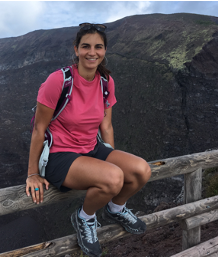 Marina Rosas Carbajal is a CNRS Researcher on Volcanology, working at the Institute of Earth Physics of Paris (IPGP, Université de Paris). She received her PhD in Earth and Environmental Sciences from the University of Lausanne (Switzerland), after graduating as a Geophysicist from the National University of La Plata (Argentina). She then obtained 3 consecutive postdoctoral fellowships from the Swiss National Science Foundation, and from the AXA Research Fund, to study the volcano La Soufrière de Guadeloupe. Her research focuses on how volcano hydrothermal systems develop, and how they influence heat and fluid transport in the volcano. She uses muon tomography to scan the interior of volcanos and how they evolve in time, and numerical modeling to understand the volcano dynamics and potential hazards.
Marina Rosas Carbajal is a CNRS Researcher on Volcanology, working at the Institute of Earth Physics of Paris (IPGP, Université de Paris). She received her PhD in Earth and Environmental Sciences from the University of Lausanne (Switzerland), after graduating as a Geophysicist from the National University of La Plata (Argentina). She then obtained 3 consecutive postdoctoral fellowships from the Swiss National Science Foundation, and from the AXA Research Fund, to study the volcano La Soufrière de Guadeloupe. Her research focuses on how volcano hydrothermal systems develop, and how they influence heat and fluid transport in the volcano. She uses muon tomography to scan the interior of volcanos and how they evolve in time, and numerical modeling to understand the volcano dynamics and potential hazards.
- Antoine Chevalier
-
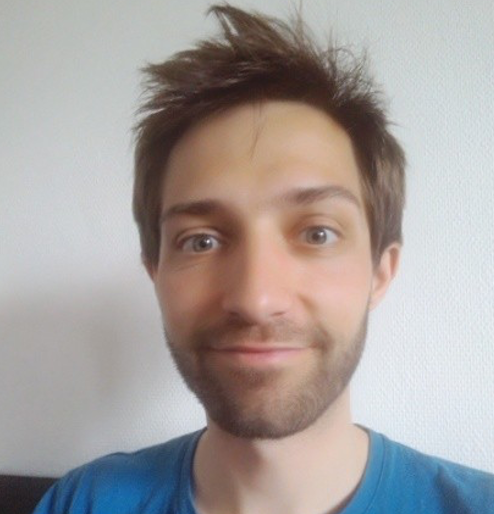 Born with an unquenchable thirst for Earth science, Antoine Chevalier originally comes from the Geophysicics field of practice. His goal: understanding the inside of complex structures (geological or man-made) from indirect measurements. As such, he has a knack for 3D imagery reconstruction algorithms and Data analysis applied to physical measurements he can get his hands on. With Muon's detector feeding him with a daily and massive amount of data, he is now all over the muon.
Born with an unquenchable thirst for Earth science, Antoine Chevalier originally comes from the Geophysicics field of practice. His goal: understanding the inside of complex structures (geological or man-made) from indirect measurements. As such, he has a knack for 3D imagery reconstruction algorithms and Data analysis applied to physical measurements he can get his hands on. With Muon's detector feeding him with a daily and massive amount of data, he is now all over the muon. - Amelie Cohu
-
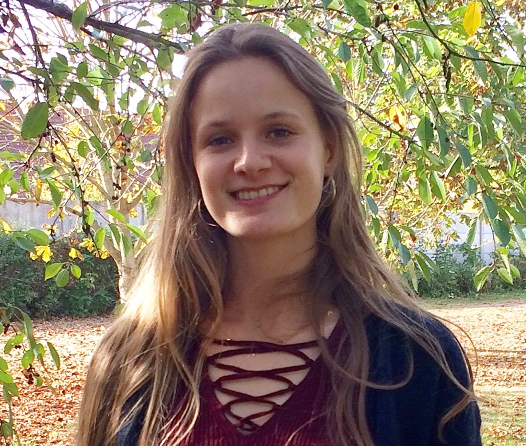 Amelie Cohu is a PhD student at IP2I. She obtained a master's degree in climate physics in Lyon and she is very interested in the interdisciplinarity between atmospheric issues and particle physics. Her research focuses on atmospheric phenomena and their impacts on the flux of cosmic rays detected on Earth's surface. Part of this job relies on CORSIKA simulation tuned on experimental data recorded with tracking detectors. Since the second cosmic ray spectrum is the component of cosmic rays used in muon tomography, this detailed study has direct implication for both muon absorption tomography and muon scattering tomography. Accurate knowledge of the cosmic ray flux makes it possible to evaluate the optimal measurement configuration too. The modelization of the muons flux at a specific location is a key ingredient of the method in any applications, from the volcanology to the imaging and monitoring of industrial large structures.
Amelie Cohu is a PhD student at IP2I. She obtained a master's degree in climate physics in Lyon and she is very interested in the interdisciplinarity between atmospheric issues and particle physics. Her research focuses on atmospheric phenomena and their impacts on the flux of cosmic rays detected on Earth's surface. Part of this job relies on CORSIKA simulation tuned on experimental data recorded with tracking detectors. Since the second cosmic ray spectrum is the component of cosmic rays used in muon tomography, this detailed study has direct implication for both muon absorption tomography and muon scattering tomography. Accurate knowledge of the cosmic ray flux makes it possible to evaluate the optimal measurement configuration too. The modelization of the muons flux at a specific location is a key ingredient of the method in any applications, from the volcanology to the imaging and monitoring of industrial large structures. - Matias Tramontini
-
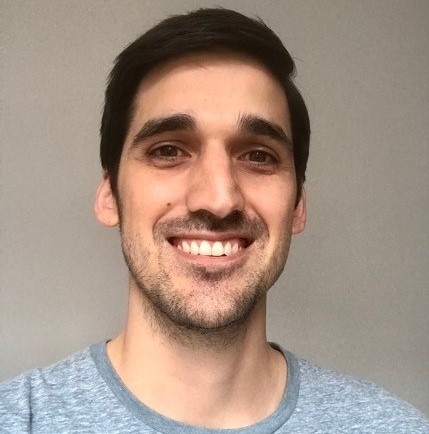 Matias Tramontini is a geophysicist that is currently doing a PhD at the National University of La Plata (Argentina). His field of work is muography applied to geological bodies. His research focuses on the use of this technique to study how mass is distributed inside volcanoes and to monitor volcanic hydrothermal activity. The goal of his research is to gain insight into how volcanoes evolve over time and to help assess potential hazards associated with them.
Matias Tramontini is a geophysicist that is currently doing a PhD at the National University of La Plata (Argentina). His field of work is muography applied to geological bodies. His research focuses on the use of this technique to study how mass is distributed inside volcanoes and to monitor volcanic hydrothermal activity. The goal of his research is to gain insight into how volcanoes evolve over time and to help assess potential hazards associated with them. - Theodore Avgitas
-
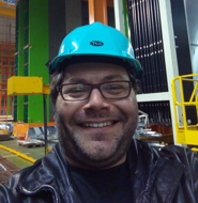 Theodore Avgitas' first acquaintance with muon tomography was the year 2018 when he took up a post-doc position at the Astroparticle and Cosmology Laboratory (APC) in Paris on the Arche project. He was involved with the detector installation at the Tumulus site of Apollonia, the data acquisition monitoring and the preliminary data quality evaluation and analysis. Before that he was a PhD researcher in APC where his work revolved around the characterization and performance evaluation of Optical Modules used for KM3NeT and ANTARES neutrino telescopes. He currently work as post-doc researcher at the Institute de Physique des 2 Infinis (IP2I) de Lyon for the REINFORCE program, mainly focusing on broadcasting the experimental aspects of muon tomography to citizen scientists by capitalizing on the numerous studies that the DIAPHANE team has performed during the last decade.
Theodore Avgitas' first acquaintance with muon tomography was the year 2018 when he took up a post-doc position at the Astroparticle and Cosmology Laboratory (APC) in Paris on the Arche project. He was involved with the detector installation at the Tumulus site of Apollonia, the data acquisition monitoring and the preliminary data quality evaluation and analysis. Before that he was a PhD researcher in APC where his work revolved around the characterization and performance evaluation of Optical Modules used for KM3NeT and ANTARES neutrino telescopes. He currently work as post-doc researcher at the Institute de Physique des 2 Infinis (IP2I) de Lyon for the REINFORCE program, mainly focusing on broadcasting the experimental aspects of muon tomography to citizen scientists by capitalizing on the numerous studies that the DIAPHANE team has performed during the last decade.
